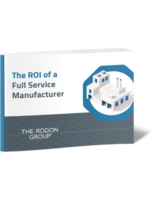High-Speed, High-Resolution Columns aid mAb characterization.
Share:
Press Release Summary:
AdvanceBio Glycan Mapping columns help researchers overcome challenges associated with glycan analysis. Bonding uses a HILIC mechanism to support glycan separations to promote speed without sacrificing data quality. Glycan maps can thus be obtained in less than ten minutes with 1.8 µm particles, which benefits those analyzing and characterizing large volumes of samples during process development.
Original Press Release:
How to Achieve High-speed, High-Resolution Glycan Mapping for mAb Characterization
The full characterization of biotherapeutics is required by regulatory authorities as properties such as safety, efficacy and the serum half-life of therapeutic proteins can be affected by differences in their glycosylation pattern. Recombinant monoclonal antibody therapeutics (mAbs) represent the largest group of therapeutic proteins the analysis of the glycan pattern is therefore an essential part of the mAb characterization process.
However, glycan mapping is a complicated and multi-step process. Rapid, reproducible and high resolution glycan mapping is now achievable thanks to developments in column technology which help researchers overcome the challenges associated with glycan analysis. Â
One of the biggest challenges associated with glycan mapping is achieving high-resolution with fast analysis times without compromising performance. In addition to long analysis times, achieving reproducible glycan results can be another challenge because glycan analytes are often of low abundance in complex biological samples and the glycans must be cleaved from the glycoprotein and labeled prior to analysis. Instrument limitations can also be another issue due to increased levels of backpressure with the sub 2 um particles.
To help researchers overcome the challenges associated with glycan analysis, Agilent has introduced its AdvanceBio Glycan Mapping columns which have been engineered and manufactured to deliver rapid, reproducible, high-resolution glycan identification to increase throughput without sacrificing the quality of data. These innovative columns have a unique bonding which uses a HILIC mechanism to support glycan separations to achieve high speed performance. Glycan maps can now be obtained in less than ten minutes with 1.8µm particles which is a significant benefit when analyzing and characterizing a large volume of samples during process development.
To read the full story and discover how you can simplify glycan mapping for characterizing candidate biotherapeutics click here.
Agilent Technologies offers a range of solutions designed to deliver consistent, exceptional performance for the separation and characterization of peptides and proteins. Find out more at www.chromnews.com
For further press information please contact:
Holly Jobbins
The Scott Partnership, 1, Whiteside, Station Road, Holmes Chapel, Cheshire, CW4 8AA, United Kingdom
Tel: + 44 1477 539539Â
Fax: +44Â 1477 539540Â Â
email to: csd@scottpr.com
Making clients successful through integrated sales and marketing
Scott Girling-Heathcote MPRCA, Junior Account Executive
The Scott Partnership Ltd
1 Whiteside, Station Road, Holmes Chapel, Cheshire CW4 8AA, UK
T:Â +44 1477 539539Â Â Â F:Â +44 1477 539540
E: sgh@scottpr.com   W: www.scottpr.com
Description: The Scott Partnership Ltd
Description: http://www.scottpr.com/interface/emailfooter650.png
Follow us:
Description: FacebookDescription: Google+Description: TwitterDescription: LinkedIn




